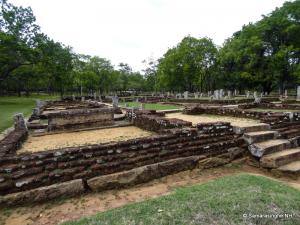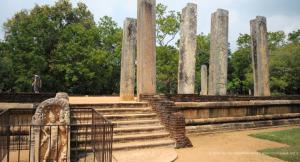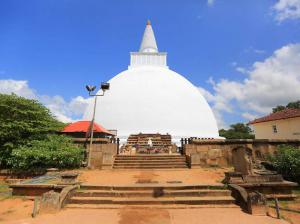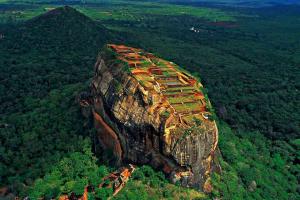Anuradhapura - (BC 377 - 1017)

The Anuradhapura Kingdom (Sinhala: අනුරාධපුර රාජධානිය), named for its capital city, was the first established kingdom in ancient Sri Lanka. Founded by King Pandukabhaya in 377 BC, the kingdom's authority extended throughout the country, although several independent areas emerged from time to time, which grew more numerous towards the end of the kingdom. Nonetheless, the king of Anuradhapura was seen as the supreme ruler of the country throughout the Anuradhapura period. Buddhism played a strong role in the Anuradhapura period, influencing its culture, laws, and methods of governance. Society and culture were revolutionized when the faith was introduced during the reign of Devanampiya Tissa; this cultural change was further strengthened by the arrival of the Tooth Relic of the Buddha in Sri Lanka and the patronage extended by her rulers.
Invasions from South India were a constant threat throughout the Anuradhapura period. Rulers such as Dutthagamani, Valagamba, and Dhatusena are noted for defeating the South Indians and regaining control of the kingdom. Other rulers who are notable for military achievements include Gajabahu I, who launched an invasion against the invaders, and Sena II, who sent his armies to assist a Pandyan prince.
Because the kingdom was largely based on agriculture, the construction of irrigation works was a major achievement of the Anuradhapura Kingdom, ensuring water supply in the dry zone and helping the country grow mostly self-sufficient. Several kings, most notably Vasabha and Mahasena, built large reservoirs and canals, which created a vast and complex irrigation network in the Rajarata area throughout the Anuradhapura period. These constructions are an indication of the advanced technical and engineering skills used to create them. The famous paintings and structures at Sigiriya; the Ruwanwelisaya, Jetavana stupas, and other large stupas; large buildings like the Lovamahapaya; and religious works (like the numerous Buddha statues) are landmarks demonstrating the Anuradhapura period's advancement in sculpting. from Wiki









































